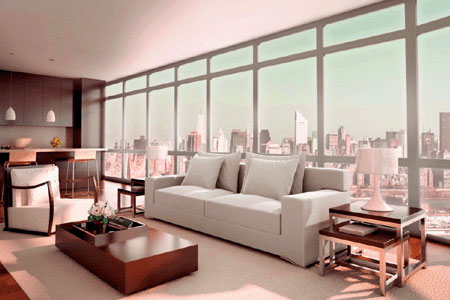
Staging an investment property can help to sell real estate, but can also help the new owner to attract quality tenants for added value. In virtually all cases, staging is used to get a property into contract and sold, then removed before the new owner takes possession of the home. However, investment property buyers will often request that the staging designs be left in place in order to facilitate an easier and quicker rental process for their new money-maker.
Investment property home staging is certainly performed with different goals in mind than the staging that is utilized in most saleable parcels of real estate. After all, appealing to investment buyers takes a bit of creativity, since investment property shoppers are rarely motivated by the same emotional imperatives as buyers who intend on occupying the purchased home.
This tutorial examines the use of home staging techniques when marketing a property to an investment buyer. I will detail how the process of staging might be different than in other real estate applications and how the present owner can use the staging as extra leverage to earn more money, facilitate a faster sale, or both, even when dealing with thrifty investment buyers.
Staging an Investment Property to Demonstrate Value
It is virtually impossible to charm an investment buyer into purchasing by appealing to their own likes and aesthetic preferences. Therefore, creating a perfect atmosphere of universal appeal using home staging is not the main goal. Instead, it is vital to demonstrate the usefulness and appeal of the home from a perspective tenant’s point of view. This is the way to convince an investment buyer that the property will serve their primary need of generating income easily and successfully.
Staging investment homes should always use simple and elegant designs that look expensive, but cost as little as possible to properly execute. This way, the prospective buyer sees that the home can be enhanced to maximum appeal with minimal cost to them, since they will likely have to utilize staging each time they seek to rent the space to a premium quality tenant.
Sellers are encouraged to inform potential investment buyers that they have already covered the cost of staging this time around and the new landlord can use the photos of the décor to market the property immediately in the media with no additional investment at all. Furthermore, the stager can speak to the potential purchaser to help them better understand how staging can net them higher rental incomes far into the future with only minimal costs involved.
Staging Investment Real Estate to Attract Quality Tenants
Since the home is beautifully staged to show how tenants would actually live, it is a natural fit for a new buyer to maintain the staging design past the date of sale and use it to close the deal with tenants once they place the available units on the competitive rental marketplace. In this regard, the work is already done and therefore the fees associated with maintaining the décor a few weeks longer should be negligible.
If the sale is difficult, sellers might offer to pay to maintain the present staging past the closing date in order to sweeten the bargain for the prospective new owners. If the sale is easy, the seller can actually use the offer of maintaining the staging at the new owner’s cost to actually cover some or all of their own investment in the original staging! This is super savvy salesmanship that can be achieved during ideal market conditions.
Either way, if the staging is left in place during the rental process, statistics clearly show that renters will pay more and commit faster to enjoy the beautiful property as their new home. Truly wise investment property buyers might even invest in a permanent collection of staging props to have on hand if and when they need to stage the unit over and over upon vacancy. This is an especially profitable investment if the owner has multiple investment properties or a large, multi-unit property that will justify the initial cost of furniture and art in a short timeline.
Tips on Staging an Investment Property
Here are some expert tips that can help any present owner of an investment home to sell the property to a new owner with a small commitment of time and labor:
Be sure to minimize the staging budget and hire a stager who has extensive experience working in rental staging.
If the staging props are to be maintained by the new owner to attract tenants, be sure that they are appealing to a broad market of potential occupants that are likely to eventually inhabit the unit. In essence, make the designs reflect the sensibilities of the eventual tenant, not the investment property buyer. If the new owner shows an interest in purchasing staging items for ongoing use, be sure to guide them towards making smart choices in terms of durability and flexibility of use for all items involved in the staging plan.
Present property owners should use the staging as an additional bargaining tool when negotiating with prospective buyers. In many case, the present owner can basically leave the property staged after transfer to allow the new owner to use the perfect décor for their marketing at little or no cost at all. As previously mentioned, in some select cases, the seller might actually be able to even recoup some of the own investment in staging by charging the new owner for this benefit.
For more information about the ideal way to stage an investment property prior to sale, talk to your real estate agent or a qualified staging professional.




